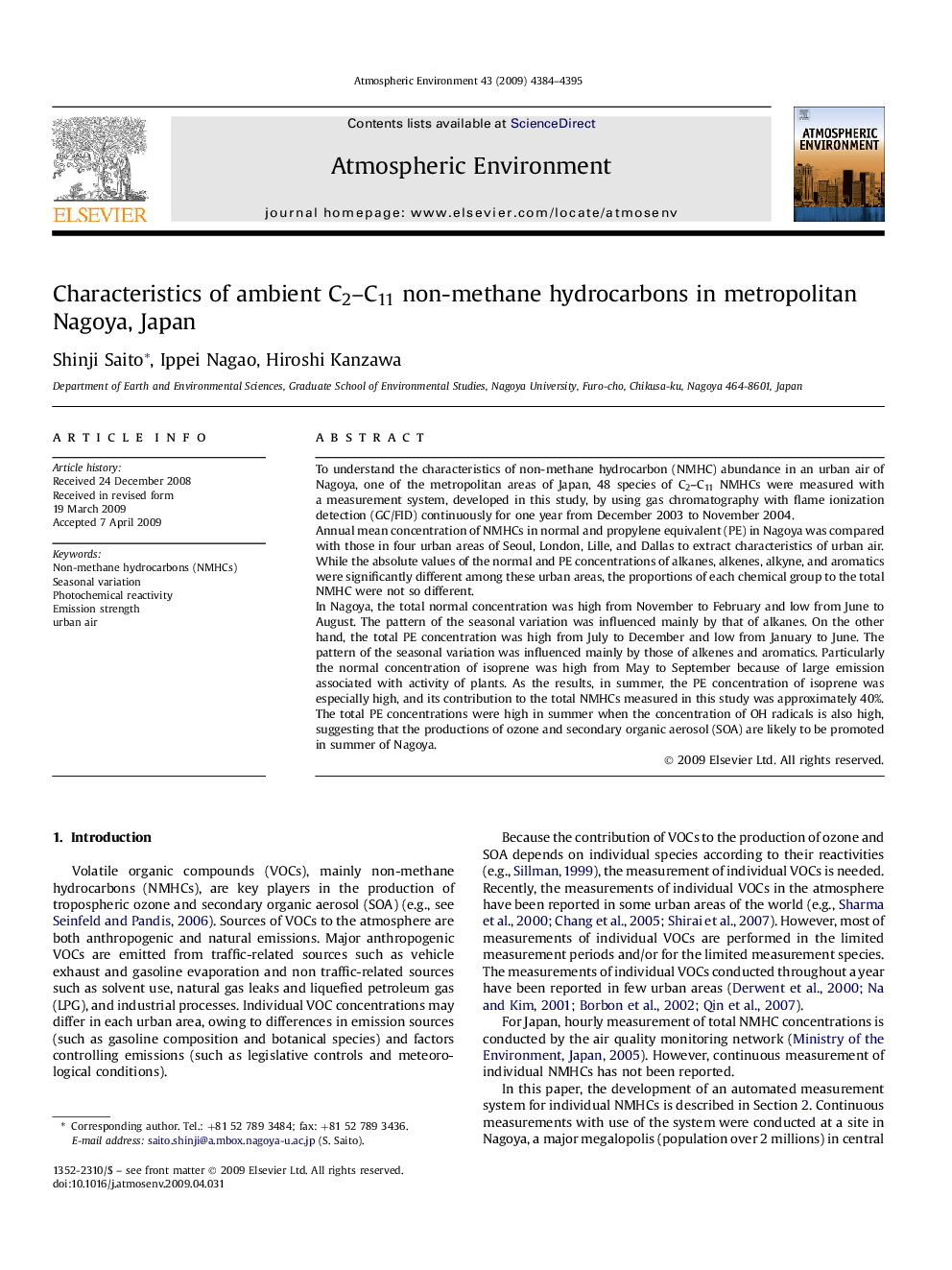| Article ID | Journal | Published Year | Pages | File Type |
|---|---|---|---|---|
| 4441350 | Atmospheric Environment | 2009 | 12 Pages |
To understand the characteristics of non-methane hydrocarbon (NMHC) abundance in an urban air of Nagoya, one of the metropolitan areas of Japan, 48 species of C2–C11 NMHCs were measured with a measurement system, developed in this study, by using gas chromatography with flame ionization detection (GC/FID) continuously for one year from December 2003 to November 2004.Annual mean concentration of NMHCs in normal and propylene equivalent (PE) in Nagoya was compared with those in four urban areas of Seoul, London, Lille, and Dallas to extract characteristics of urban air. While the absolute values of the normal and PE concentrations of alkanes, alkenes, alkyne, and aromatics were significantly different among these urban areas, the proportions of each chemical group to the total NMHC were not so different.In Nagoya, the total normal concentration was high from November to February and low from June to August. The pattern of the seasonal variation was influenced mainly by that of alkanes. On the other hand, the total PE concentration was high from July to December and low from January to June. The pattern of the seasonal variation was influenced mainly by those of alkenes and aromatics. Particularly the normal concentration of isoprene was high from May to September because of large emission associated with activity of plants. As the results, in summer, the PE concentration of isoprene was especially high, and its contribution to the total NMHCs measured in this study was approximately 40%. The total PE concentrations were high in summer when the concentration of OH radicals is also high, suggesting that the productions of ozone and secondary organic aerosol (SOA) are likely to be promoted in summer of Nagoya.
